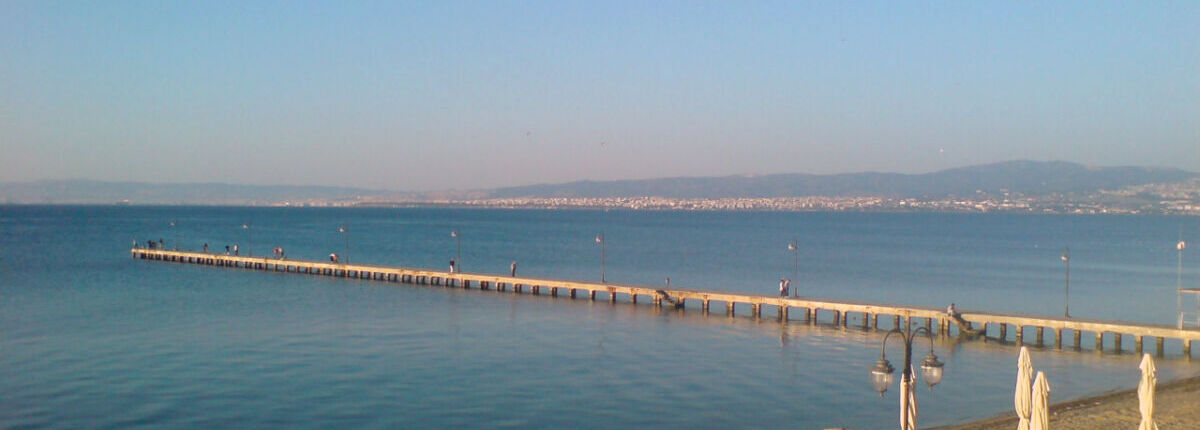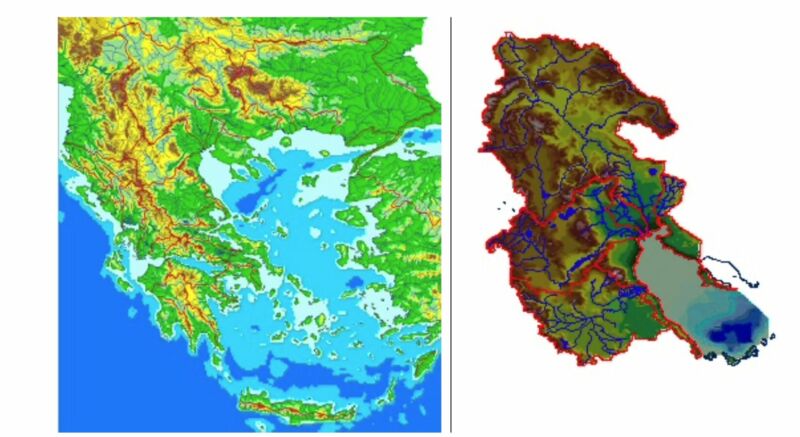Summary
Thermaikos Gulf forms an extended shelf area, which has a significant influence from rivers. Most of the particulate inputs are trapped near the river-mouth. The suspended particulate matter concentrates in nepheloid layers, at the surface and near the bottom and most of them is deposited and berried on the shelf. The fresh/salt water interface zone plays a significant role in the increase of atmospheric N2O and CH4 concentrations coming from the bacteria production in this zone. The gulf shows eutrophication events caused by the high nutrient supply, derived from the river discharges. Multiple human activities are taking place around and in the gulf as excessive urbanization, industrial activities, agriculture, fishing, mussel farming, tourism.
Policy Issue. Sustainable management of mussel culture at the area of Chalastra, Thermaikos bay.
Thermaikos Gulf is the biggest source of farmed mussels (Mytilus galloprovincialis) in Greece, representing the 88% of the country’s cultivated sea area and 80-85% of the total national production. The farms are being located in two major areas, NW of the Gulf of Thessaloniki, Chalastra (inner Thermaikos Gulf-the area under consideration for the Policy Issue) and NW of Thermaikos Gulf (estuary area of Axios- Loudias-Aliakmon rivers). Mussel farming is an activity that takes place at the area for more than 25 years, occupying an important percentage of the local population, with the mussel production of Chalastra area exceeding the 12.000tn/yr. The sea area is part of the protected area of the estuary (under the Ramsar convection) but the mussel farming is an activity compatible to the natural environment, and thus a compatible activity to the protection status. The last years, due to several reasons, as the increase of the population of the greater area of the County of Thessaloniki, the development of other Human Activities (H.A.’s: agricultural & industrial activities) and the intense increase of the mussel farming at the area, there has been an important modification to the natural environment of the Gulf that leaded to a decline of the mussel production with socioeconomic impacts to the local population (decline of mussel farmers income, unemployment, not authorized expansions of mussel cultures, negative advertisement of the products to local and international markets, etc).
For additional information
Systems Approach Framework (SAF)
Contribution following the SAF sequence, that is the system design volume followed by the system formulation volume, the system appraisal volume and finally the system output volume.
- policy forum
- system formulation
- appraisal step
- Sustainable management of mussel farming activity in the area of Chalastra, Thermaikos gulf, Greece.
Powerpoint presentation at the Cluster Meeting Thessaloniki 20-21 Oct 2009
Date: 2007-2011

Coordination by Dr. Yannis N. Krestenitis, Aristotle University of Thessaloniki



